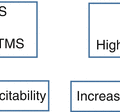© Springer International Publishing AG 2018
Stefano Masiero and Ugo Carraro (eds.)Rehabilitation Medicine for Elderly PatientsPractical Issues in Geriatricshttps://doi.org/10.1007/978-3-319-57406-6_77. Motivation and Rehabilitation in Older Patients
(1)
Centre for Memory and Mobility – ZithaSenior, Luxembourg City, Luxembourg
Physical and rehabilitation medicine (PRM) aims restoring functional ability and quality of life of patients suffering from physical, cognitive, and/or psychological impairments. A disabling condition with no known cure chronically limits the patient in his functions and may disable the patient from completing most basic activities of daily living. In general, the patient’s goal is to be pain-free and to attain a previous level of independence, thus to leave the rehabilitation institution as soon as possible [1]. Generally, patients are characterized by multiple morbidities and thus may be deficient in cognition, nutrition, muscle strength, and affectivity or have an unfavorable social living situation. In the geriatric context, the emphasis of PRM is not primarily put on the full restoration of all of these functions to a previous (premorbid) level but rather on reestablishing in the patient an appropriate level of quality of life. Thus and in our understanding, PRM should focus on providing the necessary support to the patient to maximize functionality (in the widest sense) within the limitations placed upon him by the disabling condition. Consequently, restoring a level of independence in the patient’s activities of daily living allowing him to experience adequate levels of quality of life is crucial.
To achieve this goal, patient involvement is the prerequisite. It is generally accepted that compliance to rehabilitation has a positive influence on rehabilitation outcomes [2] with factors compromising motivation (e.g., cognitive or mood disorders) increasing the length of the rehabilitation [1, 3, 4]. Motivation is a complex construct and depends on many factors. Intrinsic factors such as self-efficacy beliefs, personal needs and preferences, pain, affectivity (dysthymia/depression), fear, weakness, and cognitive deficits or extrinsic factors such as unfamiliar surroundings, contextual support, and incentives given by the therapists or the family influence motivation directly or indirectly [5]. Self-efficacy, initially defined by Bandura [6], is a person’s belief in his or her capabilities to have control over or to influence a (personal) situation or an event. Previous research found that sense of control in people and their age is negatively related, with older persons experiencing generally less control [7, 8]. Beliefs in one’s own capabilities (i.e., self-efficacy) are thought to govern cognition, emotions, and behavior and are crucial to determine to what extent a patient feels motivated. In PRM it is thus important to identify potential sources of self-efficacy enhancing information to help strengthen those beliefs [9]. To enhance motivation and corresponding behaviors (i.e., participation in rehabilitation activities), several factors are relevant: the patient’s personality, patient’s active participation in the development of the interdisciplinary rehabilitation program, definition of relevant goals to be achieved during rehabilitation, encouragement and support from the therapists, empowerment of the patient, and the rehabilitation environment in general [1, 10, 11]. Moreover, providing information about the necessity of certain exercises or therapies (i.e., patient education) may furthermore be beneficial in generating patient motivation to engage in rehabilitation [11]. Detrimental effects of lack of motivation have been discussed in the literature. Findings suggest that if patients are perceived as unmotivated by the therapist, the clinician is less likely to support and encourage him/her. Thus, motivated patients are differently treated than unmotivated ones, especially if the unmotivated patient is old [11]. Therapists play a vital role in positively influencing their patients to actively participate in therapy. An interpersonal relationship characterized by respect and trust may easily be established between the therapist and the motivated patient but takes time and effort to be established with patients lacking motivation. That is, therapists must develop an important amount of sensitivity toward their patients enabling the therapist to recognize cognitive and mood disorders threatening positive rehabilitation outcomes in their patient [4]. As a positive consequence, rehabilitation interventions can promptly be adapted according to the mental and physical state of the patient.
Stay updated, free articles. Join our Telegram channel

Full access? Get Clinical Tree




